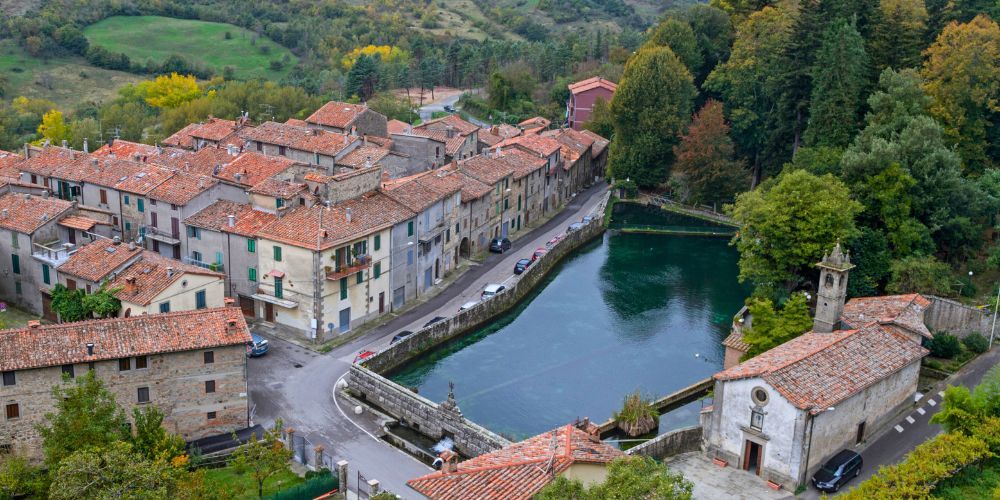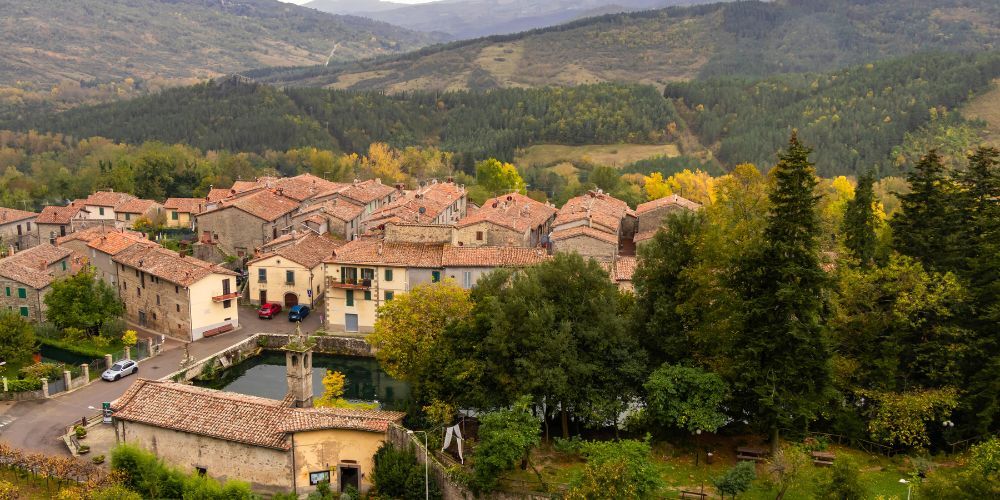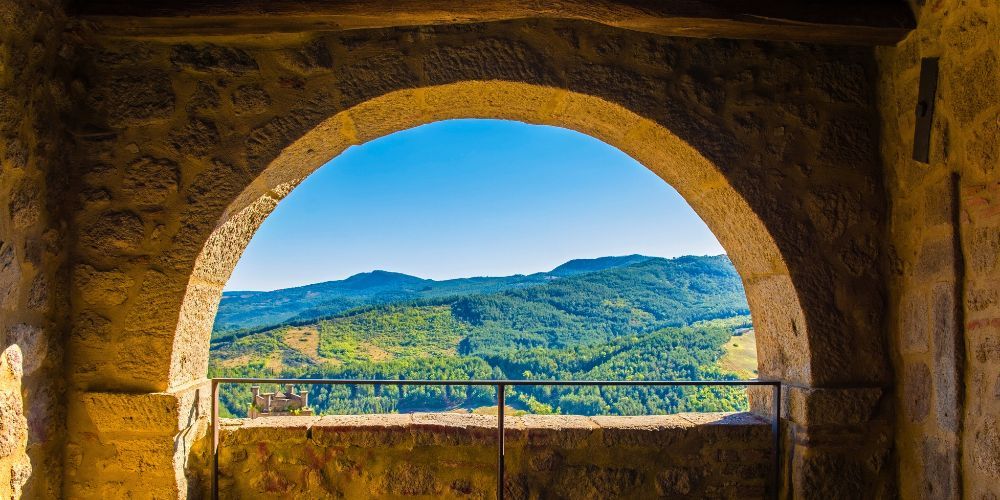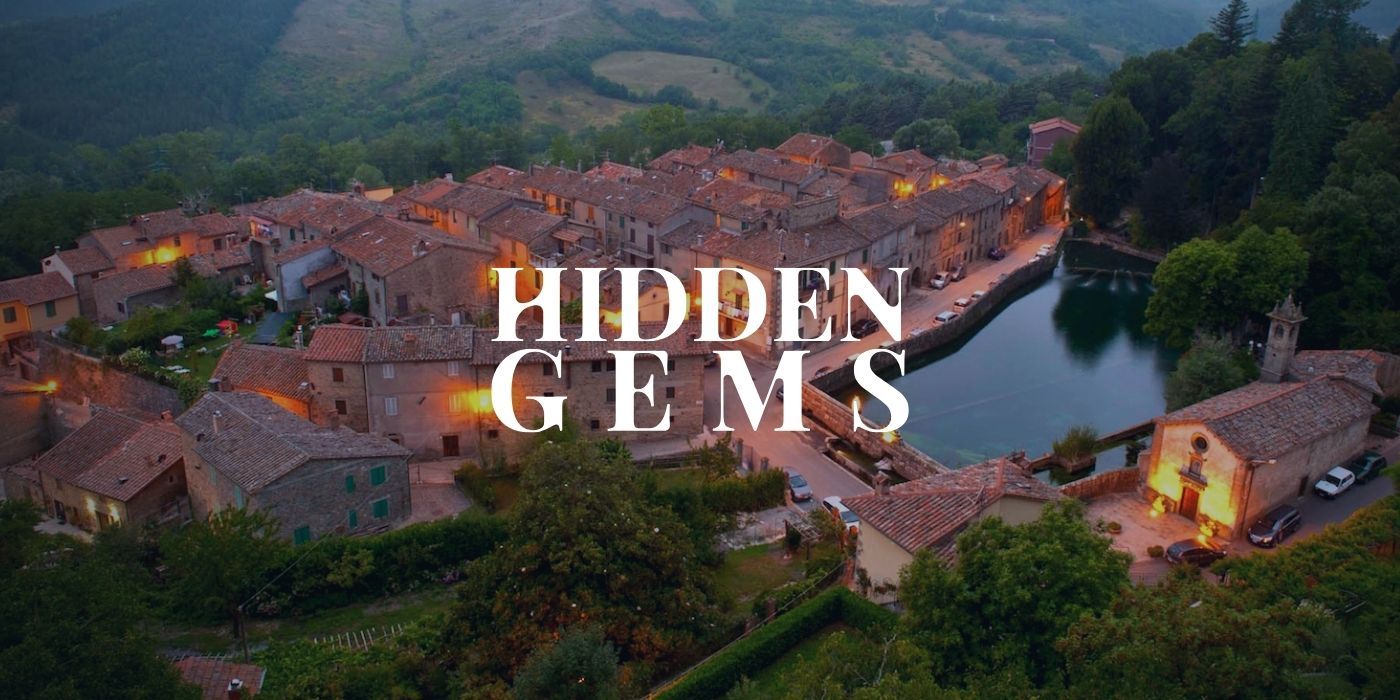A popular saying, often the bearer of great wisdom in the Italian culture, tells that: "Whoever goes to Santa Fiora, there falls in love with it". Is that true? Well, we are about to discover it today by leaving for the wonderful Tuscany, a region full of enchanting historic villages to visit. Our journey today takes us to Santa Fiora, a real gem in the landscape of Mount Amiata.
Discover with us the beauty of Santa Fiora and what to see strolling around this ancient village with a fascinating history. Read until the end, we have thought of some interesting experiences for you to make the most of your trip to Tuscany checking out its most authentic and prestigious products!

Santa Fiora: what to see strolling around the village

Here we are, our trip to Santa Fiora is about to begin! Can't wait to stroll through the alleys of this ancient village on the Amiata and discover what to see among unique buildings and attractions?
Inspire yourself following the magical atmosphere of a territory that made the history of this region, as a former County in medieval Tuscany, and enjoy the serenity of a place like few others immersed in a breathtaking natural landscape.
Here are the main things to see in Santa Fiora:
- Peschiera and its small church on Fiora river sources;
- Pieve of Saints Flora and Lucilla;
- Palazzo Sforza Cesarini;
- Museum of Mercury Mines of Mount Amiata;
- the great civic clock tower.
Shall we bet that you will fall in love, as the saying suggests?
Santa Fiora: find out Peschiera and churches
A trip to Santa Fiora must absolutely start from its most beautiful and iconic attraction, something as evocative as rare: it’s Peschiera di Santa Fiora, the perfect subject to photograph for your postcard from this gem on Mount Amiata!
This place originate in the Middle Ages as a reservoir for the waters of the Fiora river (which has its source right here!) for the breeding of fish, in particular trout, but in the Renaissance era it was transformed into a real noble garden for the lords of the town; a transformation process completed only in the mid 1800s, when Peschiera took on its elegant English-style park-garden aesthetic that we can admire nowadays.
Peschiera offers tourists a moment of pure relaxation and beauty among the colors and scents of flowers and trees that grow here fed by the waters of the river’s spring, in particular chestnut trees, silver firs and pines.
Next to Peschiera you certainly cannot miss the opportunity to visit the so-called small church of piscina (literally, small church of swimming pool), that is the Church of Madonna della Neve. It is a small Renaissance building, with a sober aesthetic taste and decorated only with a low relief in glazed terracotta by Della Robbia on the facade and some frescoes in the internal room of the chapel, painted by Nasini.
But...a little wonder lies within these walls. In fact, entering the church and walking inside towards the altar, try to take a look at the floor under your feet: that's right, you are walking over glass and what you see are the sources of the Fiora river flowing on the bed of ancient streets beneath the foundations of the building. Being there, captured by the sweet sound of the water and the noise of history, is a priceless emotion that you can only experience in Santa Fiora!
Speaking of churches, in the heart of the alleys of the historic center of Santa Fiora in Piazza dell'Arcipretura there is the main religious building of the village, that is Pieve of Saints Flora and Lucilla. This church, dating back to at least 1142 according to historical sources, has a simple facade on the outside, with a rose window on its top, but with a raw appearance where the shapes of the bricks stand out.
On the other hand, it’s a completely different story inside: in fact, the church houses a collection of terracottas by Della Robbia dating back from 1465 to 1490 (including the Crucifix), a small artistic treasure that embellishes the internal chamber of the Pieve and which certainly deserves to be visited on your trip to Santa Fiora.
Palazzo Sforza Cesarini, the tower and the alleys
Moving to the center of the town, the next stage to visit in Santa Fiora is certainly Palazzo Sforza Cesarini in Piazza Garibaldi, one of the most majestic buildings in the territory. Its construction was completed in 1575 starting from the foundations of the previous medieval fortress and expanding it to make it a true large noble residence.
Today the building serves as a town hall and since 2002 it also houses the Museum of Mercury Mines of Mount Amiata, an exhibition divided into six rooms to discover minerals and work tools, with twentytwo panels that delve into important historical, technical and social issues regarding Mount Amiata and its mines.
Inside Palazzo Sforza Cesarini it’s also possible to admire the beautiful cycles of decorative frescoes called "The Four Seasons" and "The Hours of the Day". The clock tower is another particularly interesting aspect of this building, one of the intact structures of the old medieval fortress which was incorporated into the new palace.
The suggestion conveyed by the imposing presence of the tower, which aesthetically resembles that of the fortress of the nearby village of Radicofani, is obviously important for the citizens of Santa Fiora who acknowledge this specific monument as a symbol of their city.
Are you still strolling around Santa Fiora and want to find out what more to see in this fantastic Tuscan village? Well, after visiting its most important and absolutely unmissable attractions, give yourself the opportunity to venture through its alleys without a specific destination, letting yourself be enchanted by the sensation of traveling through time and space to remote eras crossing stone-paved streets, arches, loggias and large doors. Don't worry, the Middle Ages are not back: it's the historical wonder of Santa Fiora!
Where is Santa Fiora and how to get there

Santa Fiora is a village of around 2000 inhabitants in the province of Grosseto, in southern Tuscany. It is one of the most characteristic places in the area of Mount Amiata and is located on the border with the province of Siena, as well as close to the regional borders with Lazio and Umbria.
How to get to Santa Fiora? Starting from the nearest cities, considering the geographical position of the village, the car is certainly the most convenient way to travel to the gem of Amiata.
To get from Grosseto to Santa Fiora by car it takes about an hour and you can choose two alternative routes. In the first itinerary, drive on the SS223 towards Siena and at the Paganico exit continue on the SP64, called Strada Provinciale Cipressino; continue up to the village of Arcidosso and, from here, follow the last directions through the internal roads to your destination. In the second itinerary, instead, drive on the SP159 and then continue on the so-called Strada Provinciale Voltina up to Cinigiano; from here, continue on the SP7 up to Arcidosso and finally to Santa Fiora.
To get from Siena to Santa Fiora by car you can opt for a route similar to the first itinerary from Grosseto (SS223 and Cipressino), or alternatively you can drive on the SR2 up to San Quirico d'Orcia then continuing on the SP/SS323 up to destination.
Santa Fiora, a gem of Mount Amiata in Tuscany

For many, Santa Fiora is considered the most beautiful gem of Mount Amiata, that is the most evocative village to visit in the territory of these ancient mountains, a place where man has not yet taken over nature.
Located at almost 700 meters above sea level (quite lower than the peak height of Amiata, over 1700 meters), the village of Santa Fiora is the ideal location to admire the purity of the mountain landscape, in particular looking out from the terraces of all the viewpoints around the town, of which the most famous is Loggia del Liscio.
One of the best and tastiest fruits of the lush nature of Mount Amiata is certainly the chestnut, one of the typical products of the local gastronomy.
Traveling through Santa Fiora and the other villages in the area, in fact, especially in autumn and winter it is a must to taste the marroni of Amiata, a type of chestnut suitable for being eaten roasted, as tradition suggests, but also boiled or turned into flour to prepare typical dishes, especially cakes and the iconic chestnut polenta.
The goodness of the chestnuts of Mount Amiata is celebrated in Santa Fiora every year with the traditional chestnut festival, which usually takes place in October, one of the best festivals dedicated to this product.
Chestnut polenta, however, is the most symbolic food consumed on the occasion of the torchlight procession of Santa Fiora on 30 December, a celebration of medieval origin which consists in the lighting of a large bonfire at the foot of the tower of the town hall, now a ritual of the celebrations of the end of the year in the gem of Amiata.
Santa Fiora: what to see in the surroundings
Remember when at the beginning of this article we promised to tell you about some fantastic experiences to live on your trip to Tuscany? Well, here we are! The key word we have chosen for a truly unforgettable tour is...wine!
Tuscany, in fact, is acknowledged internationally as one of the best regions in the world for the production of wine, a product much loved in Italy and abroad in all its variations and qualities.
Of course, as good Italians, we know that an excellent wine requires an equally excellent combination of other top quality products, such as bread, olive oil, cured meats and cheeses. Do you want to try this delicious experience traveling around the splendid Tuscany? Click the button below!
Book now your VIP tasting of Tuscan wines and delicaciesIn Tuscany almost all roads lead to wine...and, let's say that, what a wine! One of the most famous and iconic villages for the production of this red gold is Montepulciano, not far from Santa Fiora, on the road towards Siena.
Click below to find out how to participate to an exclusive tasting tour of the prestigious local wines by visiting two historic wineries in the wonderful setting of this city, a symbol of the history and culture of this region!
Check out the prestigious wines of MontepulcianoLet’s conclude our journey in Tuscany, discovering Santa Fiora, Amiata and the vineyards of the territory of Siena, following one of the many wine routes: the roads of taste, aroma and sensorial experience that lead us to discover Italy through the excellent quality of its wines.
And finally, this wine itinerary takes us to the village of Montalcino to discover Brunello, that somebody even consider it to be the best wine in the world. Do you want to join the tasting tour of this awesome wine? Click the button below, come on!
Check out the prestigious Brunello wine of MontalcinoAbout the author
Written on 02/02/2024



Massimiliano Antonio Primi
Set off with us towards Mount Amiata and Santa Fiora and discover what to see in this fantastic village in Tuscany and within its surroundings.